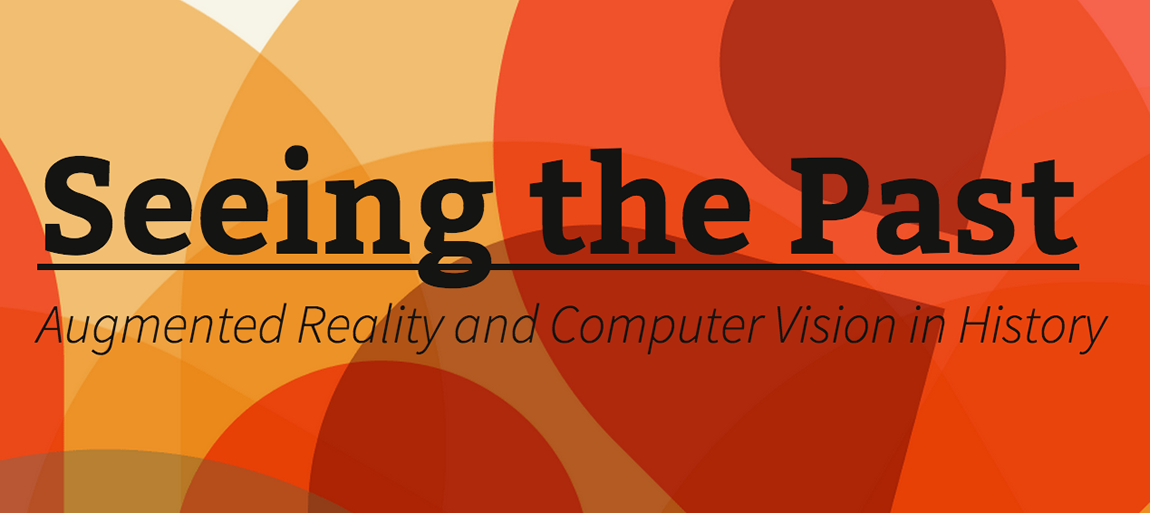Earlier this month, I had the fortunate opportunity to attend the “Seeing the Past: Augmented Reality and Computer Vision in History” conference in Niagara-on-the-Lake, ON, organized by Kevin Kee. It was an absolutely wonderful and engaging event, during which I circulated an essay I’m currently writing about computer vision and the Kits for Cultural History. An abstract for that essay—intended for an edited collection emerging from the conference—is below. Thanks again to Kevin, as well as Karen Flindall and Bill Turkell, for coordinating “Seeing the Past.” It was a pleasure being there.
“Bringing Trouvé to Light: Using Computer Vision to Speculate about Media History”
Computer vision is often associated with finding or discovering visual patterns in archives (e.g., through the use of face detection); however, it can also be used for conjectural or speculative purposes, including building objects that never existed, existed in small numbers, or are now difficult to access, study, or handle (because of their size or uniqueness). What’s more, it allows scholars to produce objects that don’t look “digital,” or to resist the “everted” appearance of many born-digital models (e.g., those seen on Thingiverse), which—as objects on screen or in hand—frequently lack the grain of material history.
This chapter focuses on one such application, in the context of some curious technologies made by Gustave Trouvé during the second half of the nineteenth century. Trouvé designed, prototyped, patented, and built a wide variety of curiosities, from electric outboard motors and sewing machines to battery backpacks and telegraphic watches, seemingly ahead of his time. He also made a number of battery-driven, “electric jewels,” or animated hairpins, blinking stickpins, and other such pieces meant to be worn on the person, often on stage for performances (e.g., of Faust) or at social gatherings. Since he produced this jewellery in small batches, very few pieces remain today. And those that do exist are difficult to access, are quite small, or no longer function properly (if they ever did). Still, some of his sketches, patents, and notes have been digitized and are publicly available (e.g., via this GitHub repo).
In Jewellery in the Age of Queen Victoria (British Museum Press 2010), Gere and Rudoe thoroughly detail and contextualize jewellery from Trouvé’s period. In so doing, they mention the following: “We have not come across any surviving examples of moving jewels” (213). But, immediately after this remark, they issue an interesting call of sorts: “the following contemporary descriptions are given in the hope that they will enable such jewels to be brought to light” (213). Here, “brought to light” could imply a gesture to collectors, an invitation to donate moving jewels to their local memory institution. However, it more likely implies reconstructing electric jewels based on extant materials, a procedure that poses a number of challenges for scholars of history: filling in the gaps of material culture, designing today through often undocumented Victorian techniques, rigorously perceiving the particular designs of miniatures, reconstructing at scale, and contextualizing the jewellery with attention to its actual use (not just its construction). With these challenges in mind, this chapter argues that, today, the practices of photogrammetry and laser scanning allow scholars to prototype Trouvé’s jewels and other Victorian artifacts like it. Generally speaking, it looks at how historical manufacturing techniques can be combined with contemporary computer vision. More specifically, it assesses the key differences between 2D and 3D camera techniques for historical research, unpacks the processes of constructing and fabricating 3D models (based on extant materials), outlines how those models can be shared and rendered discoverable online, and—perhaps most important—explains how computer vision allows scholars to communicate the meaningfulness of the work they do by hand.
Post by Jentery Sayers, attached to the KitsForCulture project, with the news tag. Featured image for this post care of Kevin Kee.

